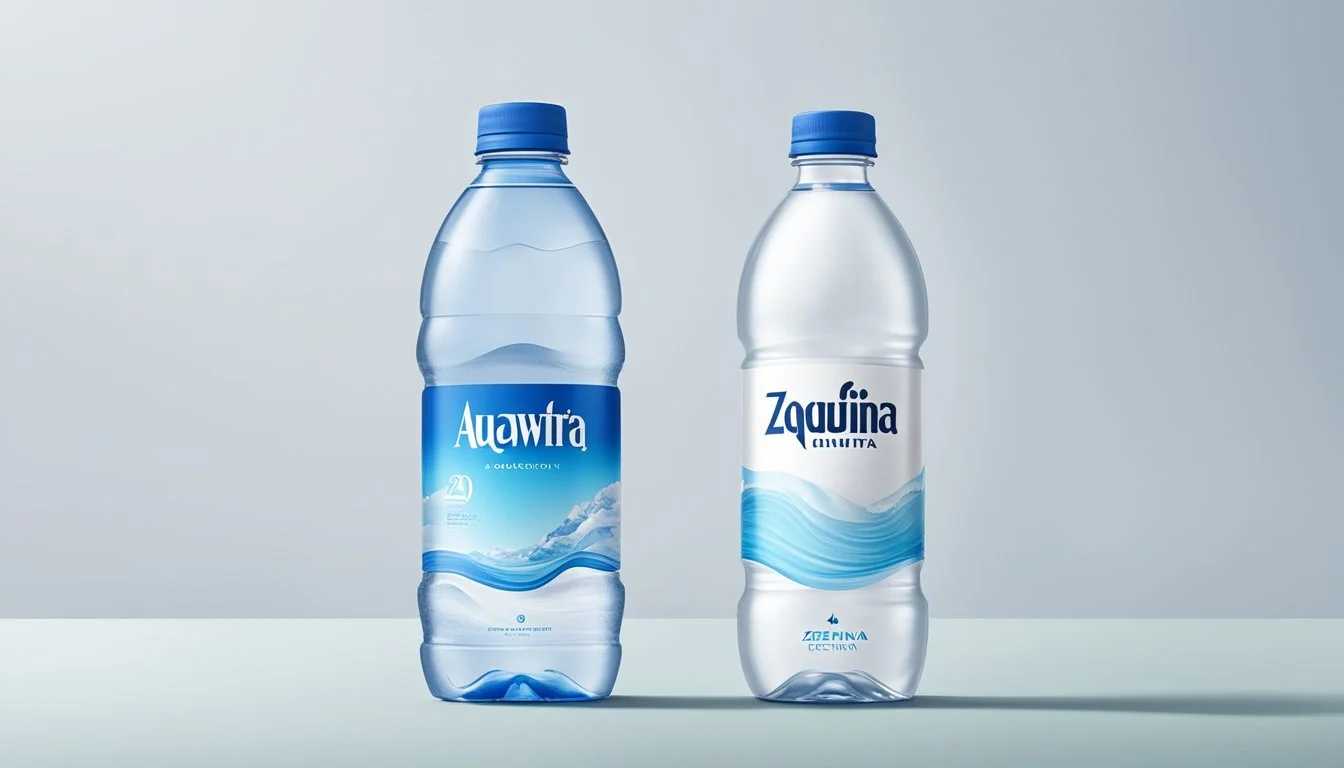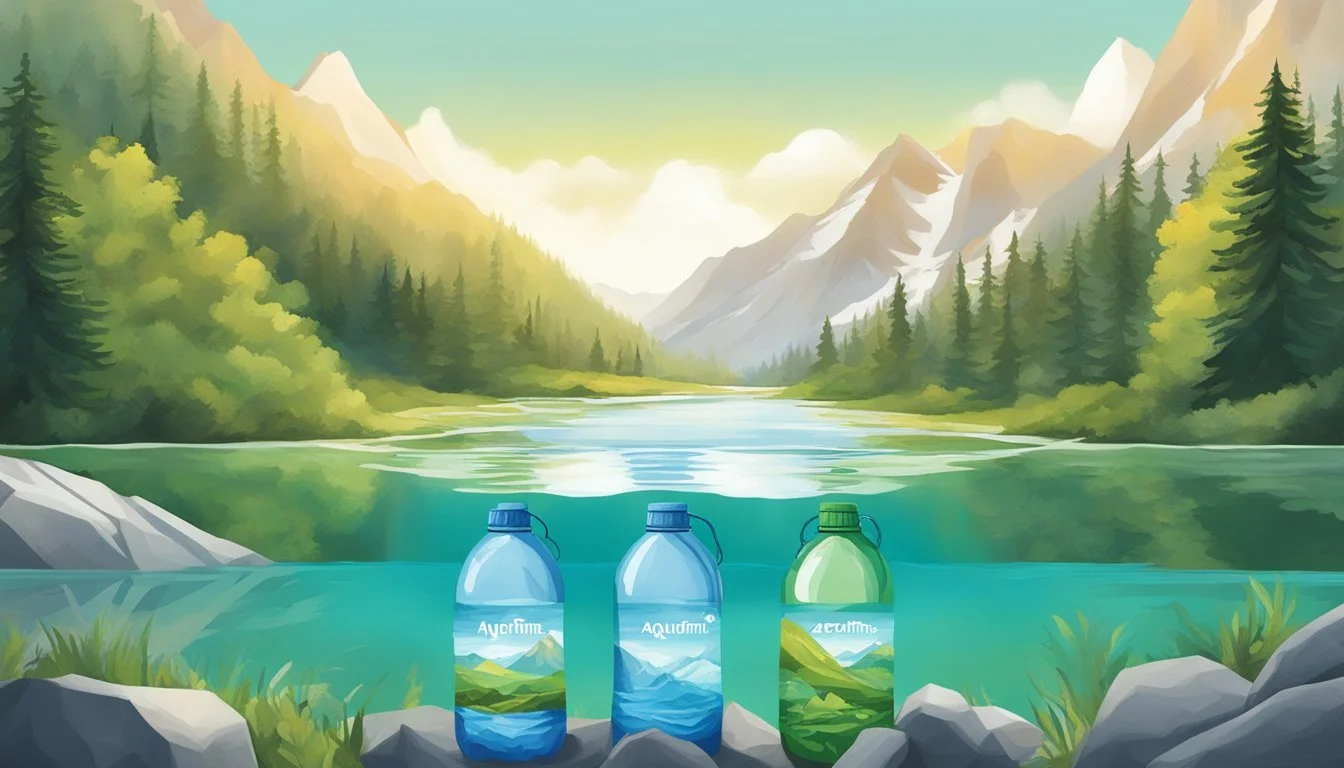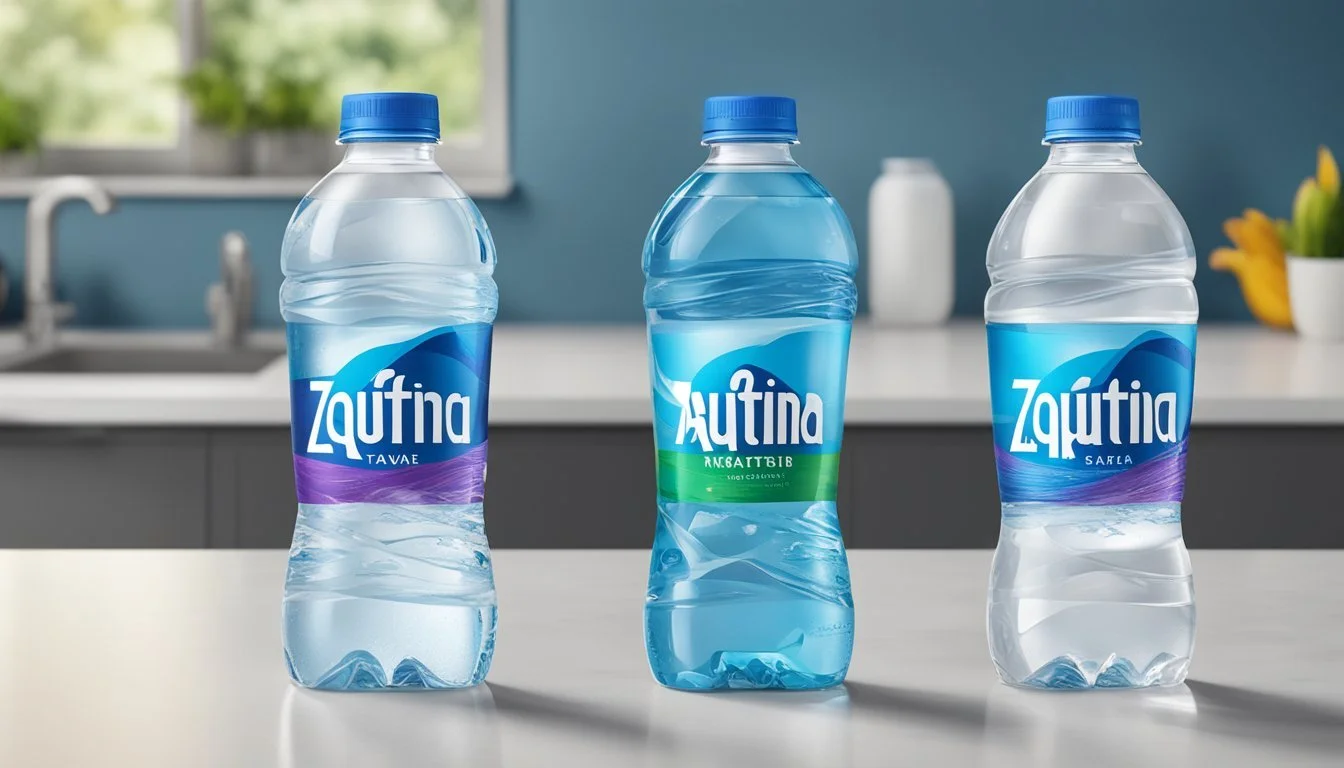Aquafina vs. Zenwtr
Which Bottled Water Offers Superior Quality?
When it comes to choosing the right bottled water, the debate between Aquafina and ZenWTR is inevitable. Aquafina, known for its purity and accessibility, offers a straightforward, dependable choice for hydration. It’s a favorite in many households and readily available in most stores.
On the other hand, ZenWTR promotes its commitment to the environment and health with its naturally alkaline pH of 9.5. Unlike other brands that use artificial additives, ZenWTR maintains its alkalinity naturally. This environmental focus, combined with its health benefits, makes ZenWTR an appealing option for environmentally conscious consumers.
For those weighing convenience against sustainability, the decision isn't straightforward. Aquafina wins on convenience and wide availability, while ZenWTR stands out with its eco-friendly packaging and natural health benefits. Each has its strengths, and your choice may come down to what values you prioritize in your bottled water.
Overview of Bottled Water Industry
The bottled water industry has seen significant growth with increasing consumer demand and evolving environmental considerations. This section provides insight into market dynamics, major players, and regulatory standards.
Evolving Preferences in Bottled Water
Consumer preferences in bottled water have shifted towards options perceived as healthier and environmentally friendly. Alkaline water, like ZenWTR, caters to those seeking health benefits, while purified water brands like Aquafina appeal to those looking for taste and purity.
Brands are also emphasizing eco-friendly packaging, responding to growing environmental concerns. Recycled materials and reduced plastic usage are becoming key selling points in the industry.
Key Players in the Market
The bottled water market is dominated by several large brands. Aquafina and ZenWTR are notable contenders, with ZenWTR positioned as a sustainable option through its use of recycled plastics. Nestlé Pure Life, despite being the largest bottled water company, has faced criticism over quality.
Other major brands include Dasani, known for adding mineral salts for flavor, and regional brands that cater to local preferences. Market share data shows significant competition, with brands differentiating through filtration processes and marketing strategies.
Regulations and Standards
The bottled water industry operates under strict regulations to ensure safety and quality. In the U.S., the EPA oversees public water systems, while the FDA regulates bottled water. Standards require compliance with set limits for contaminants, including heavy metals and microbes.
Labeling regulations mandate clear information on water sources and treatment methods. Brands must also adhere to packaging standards to prevent contamination. Regular inspections and quality checks are conducted to maintain public trust in bottled water safety.
Understanding Aquafina
Aquafina is a popular bottled water brand owned by PepsiCo, known for its rigorous purification process to ensure high quality and taste. Key aspects include its origin, brand history, and the unique Hydro-7 filtration method.
Origin and Brand
Aquafina is a product of PepsiCo, a multinational food and beverage corporation. Launched in 1994, it has since become one of the leading bottled water brands globally.
PepsiCo sources Aquafina water from public municipal water systems.
Aquafina's branding focuses on providing pure and refreshing drinking water, meeting consumer demands for trust and quality.
Purification Process
Aquafina undergoes a robust purification process designed to remove impurities and contaminants. The process begins with municipal water, which is subjected to several stages of filtration.
Key purification steps include carbon filtration, ultraviolet light, and ozone sterilization. These steps collectively ensure the water is free from dissolved solids, organic compounds, and any potential microorganisms.
The resulting product is often devoid of mineral content, making it a pure form of H₂O.
Hydro-7 Filtration
Aquafina's Hydro-7 filtration system is a proprietary method that utilizes seven steps of purification, ensuring high purity levels. The process prominently features reverse osmosis, a technique effective in eliminating a wide range of contaminants.
The stages include pre-filtration, reverse osmosis, polishing, and additional safety filters. Each step is meticulously designed to target specific impurities, maintaining consistent quality.
Hydro-7 filtration highlights Aquafina's commitment to rigorous water purification standards, positioning it as a reliable choice for consumers seeking pure bottled water.
Understanding Zenwtr
ZenWTR is highly regarded for its natural alkalinity and strong commitment to sustainability. Its unique sourcing and innovative packaging distinguish it in the crowded bottled water market.
Alkaline Advantage
ZenWTR boasts a pH level of 9.5, placing it firmly in the alkaline category. This alkalinity is achieved through a natural process involving volcanic rock filtration. Unlike some brands that use artificial additives to increase pH levels, ZenWTR's approach relies on the natural balance of minerals.
The high pH level can help neutralize acidity in the body, which some consumers find beneficial for hydration and overall wellness. This makes ZenWTR an attractive choice for those seeking naturally alkaline water.
Source and Sustainability
ZenWTR sources its water from natural springs filtered through volcanic rock, which adds essential minerals and maintains a balanced pH. This natural sourcing method ensures the water's quality and taste.
The company is dedicated to sustainability, pledging to rescue 50 million pounds of plastic from oceans by 2025. Their efforts include partnering with environmental organizations and investing in sustainable practices. This focus on sustainability appeals to eco-conscious consumers looking to reduce their environmental footprint.
Packaging and Environmental Focus
ZenWTR stands out with its 100% recycled plastic bottles, which are certified ocean-bound. By using recycled materials, ZenWTR reduces the need for new plastic production, thereby decreasing its environmental impact.
The company emphasizes a closed-loop system to promote recycling and minimize waste. This commitment to eco-friendly packaging not only aids in combating plastic pollution but also sets a standard for the industry. ZenWTR's innovative approach makes it a leading option for those prioritizing sustainability in their purchasing decisions.
Health and Hydration
Aquafina and ZenWTR both provide hydration, but they differ in mineral content, pH levels, and potential health benefits.
Benefits of Adequate Hydration
Hydration is essential for maintaining bodily functions. Ensuring adequate fluid intake helps regulate body temperature, transport nutrients, and remove waste. Well-hydrated individuals may experience better skin health, energy levels, and digestion.
Ensuring proper hydration can also support cognitive function and physical performance. Water acts as a lubricant for joints and a cushion for the spinal cord. Drinking water consistently throughout the day is crucial to avoid dehydration, which can lead to headaches, fatigue, and impaired concentration.
Comparing Mineral Content
Aquafina is purified water, typically containing fewer minerals than spring or mineral waters. It undergoes a rigorous purification process, resulting in a clean, crisp taste but minimal natural electrolytes. Aquafina’s neutral pH is close to 7, making it neither acidic nor alkaline.
On the other hand, ZenWTR boasts a high alkaline pH of 9.5, which some believe helps neutralize acidity in the body. This brand emphasizes its eco-friendly packaging and aims at reducing plastic waste. ZenWTR also contains more natural minerals than Aquafina, which could offer additional health benefits. These differences in mineral content and pH level might be crucial for those seeking specific hydration needs.
Quality and Taste Profile
Aquafina and ZenWTR offer distinct experiences when it comes to their quality and taste. These differences are attributed to various factors including mineral content, pH levels, and the purification processes they undergo. Understanding these factors provides insight into the flavor profiles of each water brand.
Contributing Factors to Water Taste
Mineral Content: The mineral content significantly influences water taste. ZenWTR’s natural alkalinity with a pH of 9.5 gives it a smoother taste due to the higher mineral content. In contrast, Aquafina, being purified through reverse osmosis, has minimal mineral presence, resulting in a cleaner, more neutral taste.
Purification Process: Aquafina undergoes an extensive purification process including reverse osmosis. This removes impurities and minerals, yielding very pure water. ZenWTR, however, maintains its natural mineral content, which can result in a richer taste profile.
Flavor Perceptions of Aquafina and ZenWTR
Aquafina: Consumers often describe Aquafina as having a very neutral flavor. This neutrality is often preferred by those who want a water that doesn't introduce any additional taste. The extensive purification ensures that the water is free from any off-flavors, making it a reliable choice for everyday hydration.
ZenWTR: ZenWTR, with its higher pH level of 9.5, offers a subtle but distinct taste. The alkalinity and mineral presence give it a smooth, slightly nuanced flavor which some may find more refreshing. Users praise it not just for its taste but also for its environmentally friendly packaging made from recycled ocean-bound plastic.
Price and Accessibility
Aquafina and ZenWTR differ significantly in terms of cost and availability. Understanding these differences is crucial for consumers looking for both value and convenience.
Comparing Costs
Aquafina is widely known for being one of the most affordable bottled water brands. Prices typically range from $1 to $1.5 per bottle, making it accessible to a broad range of consumers. Aquafina often benefits from bulk pricing, further reducing the cost per unit when purchased in larger quantities.
ZenWTR, on the other hand, is considered a premium brand. Prices for ZenWTR can be higher, often ranging from $2 to $3 per bottle. This price is justified by its unique features, such as natural alkalinity and use of recycled ocean-bound plastic. Consumers willing to spend more for environmentally conscious options might find ZenWTR worth the investment.
Distribution and Availability
Aquafina's distribution is extensive, making it available in almost every convenience store, supermarket, and vending machine across the country. Its parent company, PepsiCo, leverages a vast distribution network to ensure widespread availability, so it's rarely hard to find.
ZenWTR, while growing in popularity, has a more limited distribution network compared to Aquafina. It's commonly found in health food stores, specialty markets, and select supermarkets. Online platforms also offer it, but its availability can be spotty in comparison to more ubiquitous brands like Aquafina. This can make ZenWTR less convenient for some consumers despite its premium appeal.
Environmental and Social Responsibility
Both Aquafina and ZenWTR have initiated measures to lessen their environmental impact, particularly focusing on sustainability and use of plastic.
Sustainability Initiatives
ZenWTR emphasizes its commitment to environmental sustainability. The brand markets itself as the first bottled water made from 100% recycled, certified ocean-bound plastic. This not only helps to reduce ocean pollution but also minimizes the need for virgin plastic production.
Aquafina has taken steps to enhance its sustainability as well. The brand uses the HydRO-7 filtration process to purify its water. Though Aquafina doesn't highlight the use of recycled materials as prominently as ZenWTR, it has also made efforts to minimize its carbon footprint and improve its bottling processes.
Recycling and Plastic Use
ZenWTR stands out for its use of 100% recycled ocean-bound plastic in its bottles, significantly contributing to efforts to clear plastic waste from marine environments. This initiative not only reduces waste but also circumvents the environmental damage involved in producing new plastic.
Aquafina primarily uses PET plastic for its bottles, which is recyclable but less sustainable compared to ZenWTR's approach. The brand encourages recycling and has made strides to reduce the weight of its bottles, making them more efficient to produce and transport. However, Aquafina hasn't matched ZenWTR's comprehensive use of recycled materials.
Consumer Perception and Influence
Aquafina and ZenWTR each hold distinctive places in the bottled water market, driven by consumer feedback and online presence. Each brand leverages different strengths to appeal to health-conscious and environmentally-aware buyers.
Public Reports and Reviews
Aquafina often receives positive feedback for its purity and taste, attributed to its seven-step Hydro-7 purification process. Consumers appreciate the consistent quality across various batches. Many reviews highlight its refreshing, clean flavor, making it a favorite among those who prioritize water purity.
ZenWTR, meanwhile, garners acclaim for its commitment to sustainability. With a pH of 9.5, it positions itself as not just a refreshing drink but also one that potentially offers health benefits due to its alkalinity. Reviews frequently mention the brand's eco-friendly ethos, swaying environmentally-conscious consumers.
Social Media and Marketing Impact
On social media, Aquafina maintains a robust presence through strategic partnerships and influencer collaborations. Campaigns emphasize its purity and partnership with celebrities to increase visibility. Consumer posts and YouTube reviews often praise its crisp taste and reliable quality.
ZenWTR leverages its environmental message heavily in marketing. Its initiatives in reducing plastic waste resonate strongly on platforms like Instagram and Twitter. Influencers often spotlight its eco-friendly packaging and the brand’s commitment to sustainability, enhancing its appeal among green-conscious buyers and generating significant buzz.
Both brands successfully utilize their distinct strengths to build firm consumer bases through effective public relations and savvy marketing strategies.
Conclusion
Aquafina and ZenWTR each present their unique selling points.
Hydration: Both brands provide reliable hydration, making them suitable choices for maintaining daily fluid intake.
Health Benefits: Aquafina is purified through a rigorous process ensuring its cleanliness. ZenWTR, with its alkaline pH of 9.5, offers potential benefits for those seeking enhanced hydration and alkalinity.
Here’s a quick comparison:
Aquafina ZenWTR pH level Neutral (around 7) Alkaline (9.5) Source Municipal water Recycled Ocean-bound Plastic Taste Clean and crisp Slightly mineral Sustainability Conventional materials Eco-friendly packaging
Environmental Impact: ZenWTR is committed to sustainability, using bottles made from recycled ocean-bound plastic. This aspect can be critical for eco-conscious consumers.
Taste: When it comes to taste, personal preference plays a key role. Some may prefer Aquafina's neutral taste, while others might enjoy the subtle mineral flavor of ZenWTR.
Choosing between Aquafina and ZenWTR boils down to individual priorities—whether it's environmental sustainability, alkaline water benefits, or simply brand loyalty. Both brands offer quality hydration solutions, catering to diverse consumer needs.








